Jamie Carstairs, who manages the Historical Photographs of China Project, writes about a collection just added to the HPC site.
Last year, an album of 124 photographs was generously donated by Richard Ambrose to the Historical Photographs of China project, care of Special Collections, University of Bristol (DM2887).
Many of the photographs in the album are by either Lai Fong (Afong Studio) or John Thomson, and were taken in Fuzhou (Foochow) or elsewhere in Fujian Province. Most probably the album was put together in China, for or by, John Gurney Fry.
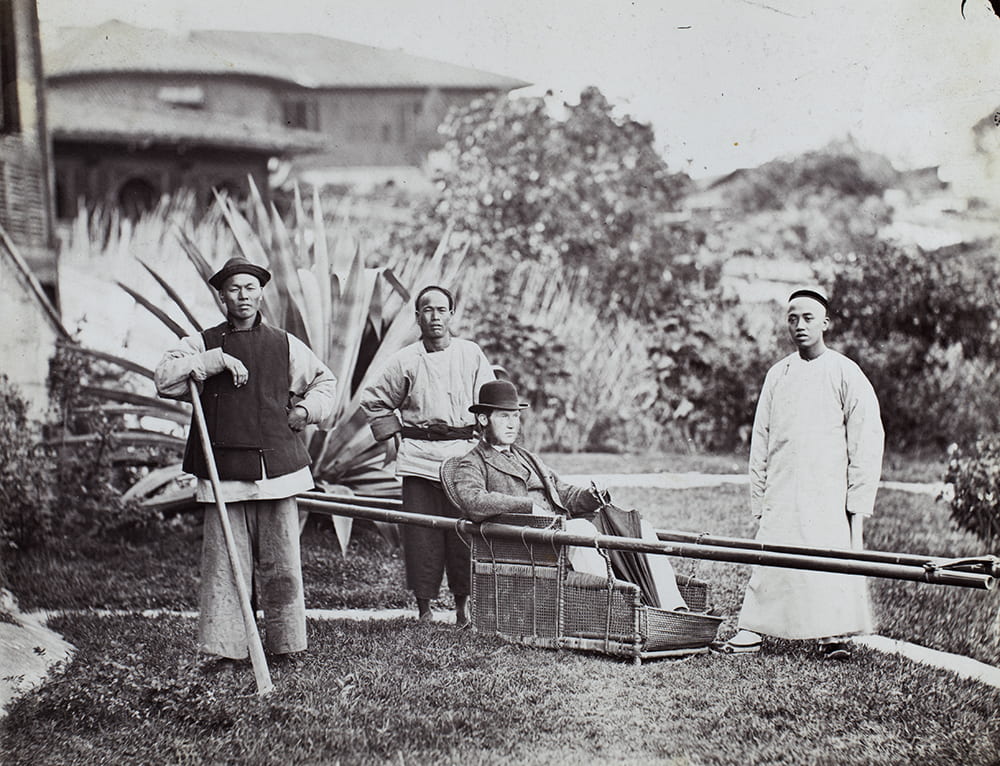
John Gurney Fry is depicted, somewhat idiosyncratically, with bowler and umbrella, in a sedan chair parked in the garden of ‘The Old Bungalow’, with his gardener, chair bearer and a house servant, Fuzhou, c1869-1870. HPC ref: Fr01-014.
J.G. Fry (1838-1877) was born in Essex, England, where he died, aged just 39. In Fuzhou he had been resident partner in the firm of John Silverlock & Company, merchants. His brother, Frederick William Fry also worked for the company, as a clerk. On Fry’s ‘premature death’, a notice reproduced from the Foochow Herald records that ‘The Foochow community are indebted to the deceased gentleman for his hearty assistance in several public undertakings, notably the Club, of which he was the principal promoter’.(1) Indeed, early on in the album are photographs of the club’s opening in 1870 – Fr01-007 and Fr01-005.
Fujian Province is tea country and Silverlocks (known as Zhonghe in Chinese) was principally a tea firm. In the album, there’s a straight-on Chinese style portrait of a ‘Tea man’ (merchant) who worked at the firm, named as Hopchun. He is posed with a bowl of tea, a tobacco pipe and fan, beside a tea plant (Camellia sinensis), the plant as if on an altar.
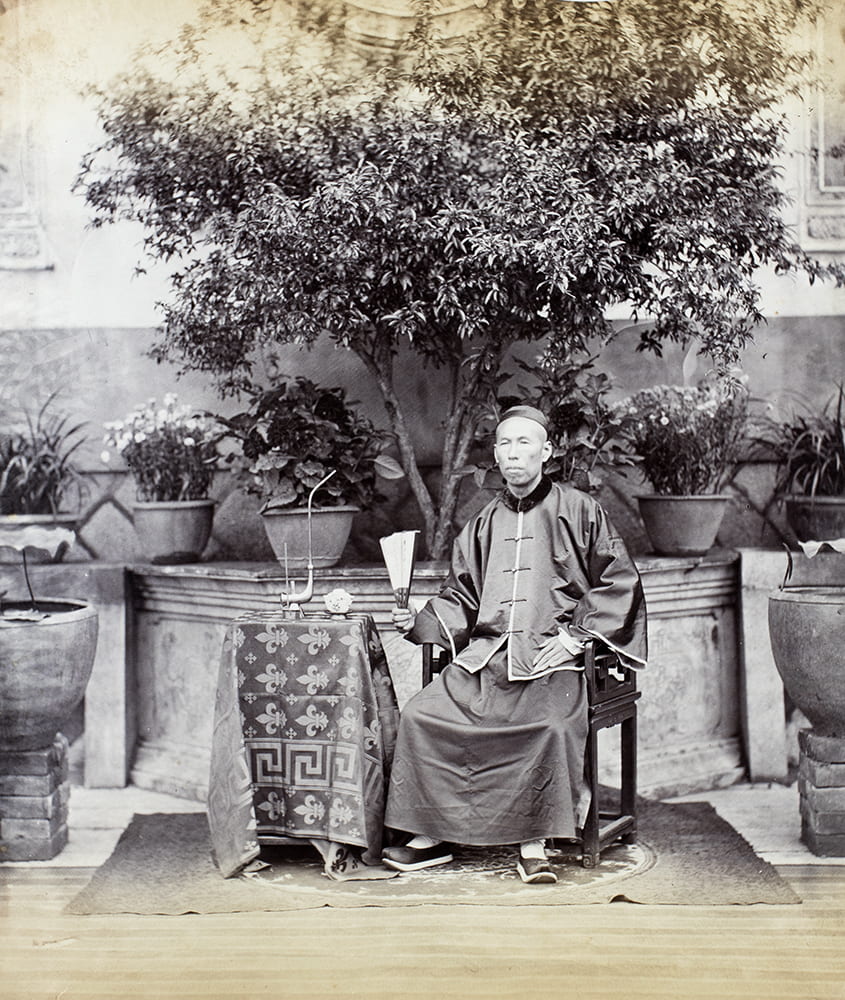
A portrait of Hopchun, c.1869, in which a tea plant is central in a symmetric composition. Photograph attributed to Lai Fong (Afong Studio), as suggested by the number written in pencil on the album page (30). See the Lai Fong (Afong Studio) number lists in Terry Bennett, History of Photography in China: Chinese Photographers 1844-1879 (London: Quaritch 2013), p. 312. HPC ref: Fr01-046.
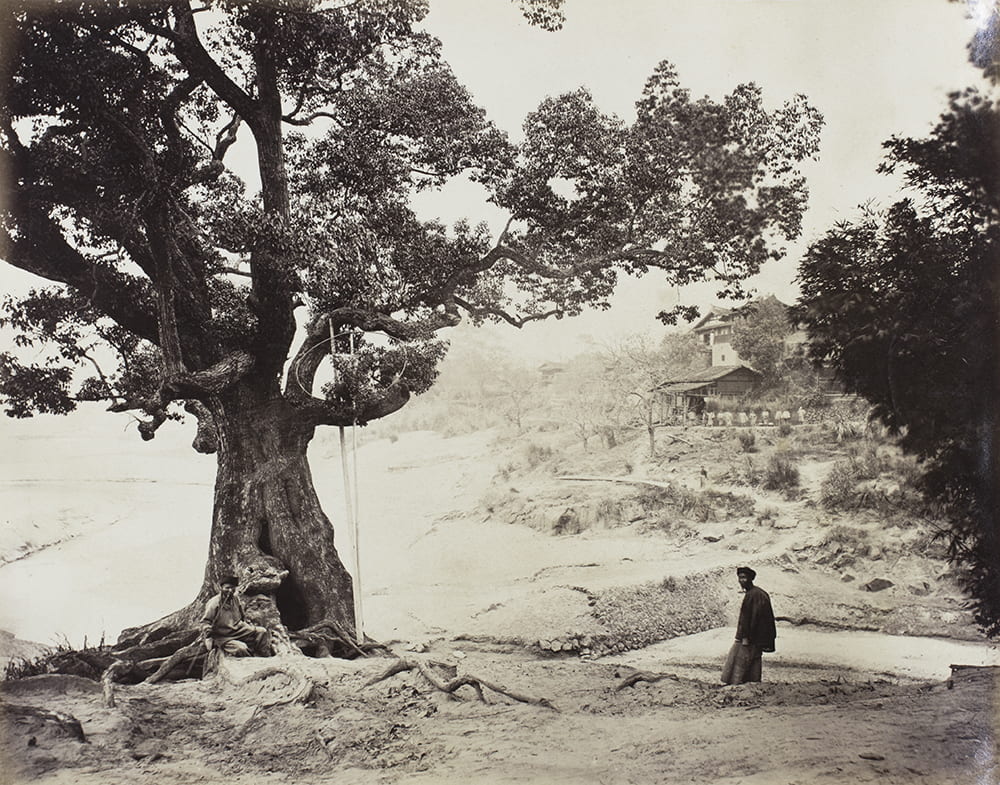
Captioned in the album ‘Village up country’ (i.e. northern Fujian, a principal tea region). This old tree is thought to be a tea tree. Beside it, there appears to be a hooped tool on poles, perhaps netted, for harvesting the leaves? The photograph may be by John Thomson, c1870? HPC ref: Fr01-093.
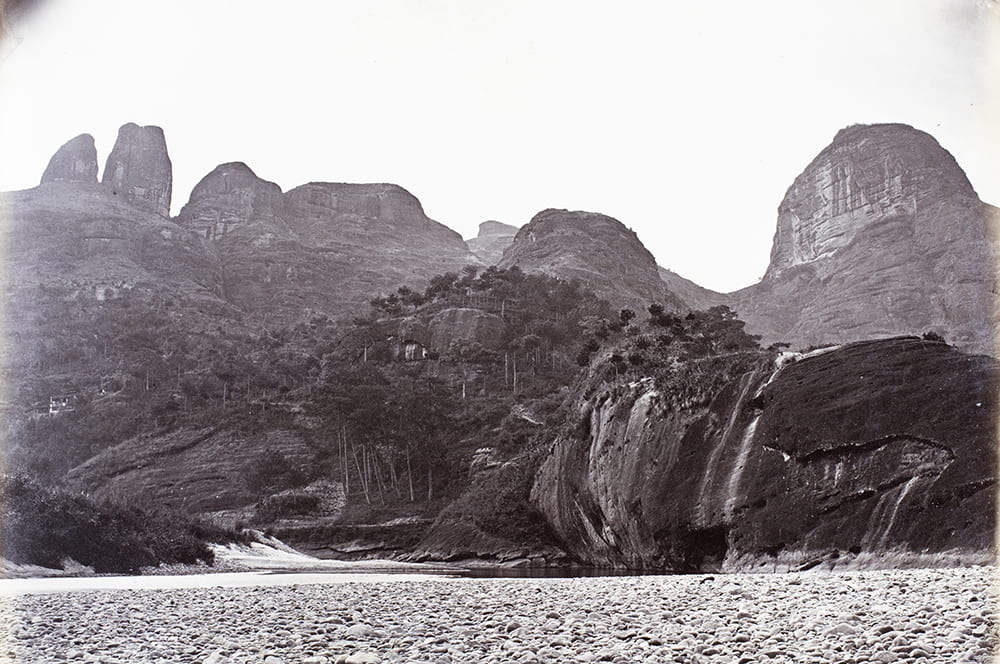
Drum Peak and other Wuyishan peaks, near Xingcun, Fujian, c1869. This is a fine photograph of groves of ancient tea trees in their natural mountain setting, one of several accomplished landscape photographs of dramatic Fujian scenery by Lai Fong. HPC ref: Fr01-090.
Lai Fong used the tiresome wet collodian process which required the glass plate negative to be processed immediately before the chemicals dried. Terry Bennett notes (2) that Lai Fong’s makeshift portable dark-tent (i.e. darkroom) can be seen on a boat in Fr01-071, as shown below. One has great admiration for the early photographers, lugging around their kit (bulky camera paraphernalia, as well as flasks of chemicals and fragile glass negatives) in wheelbarrows, on porters or pack horses ‘their fingers and linen stained with nitrate of silver and odoriferous chemicals’ (3) – and for their ingenuity as regards darkrooms. C. F. Moore, for example, converted a Chinese sedan chair into his portable darkroom.
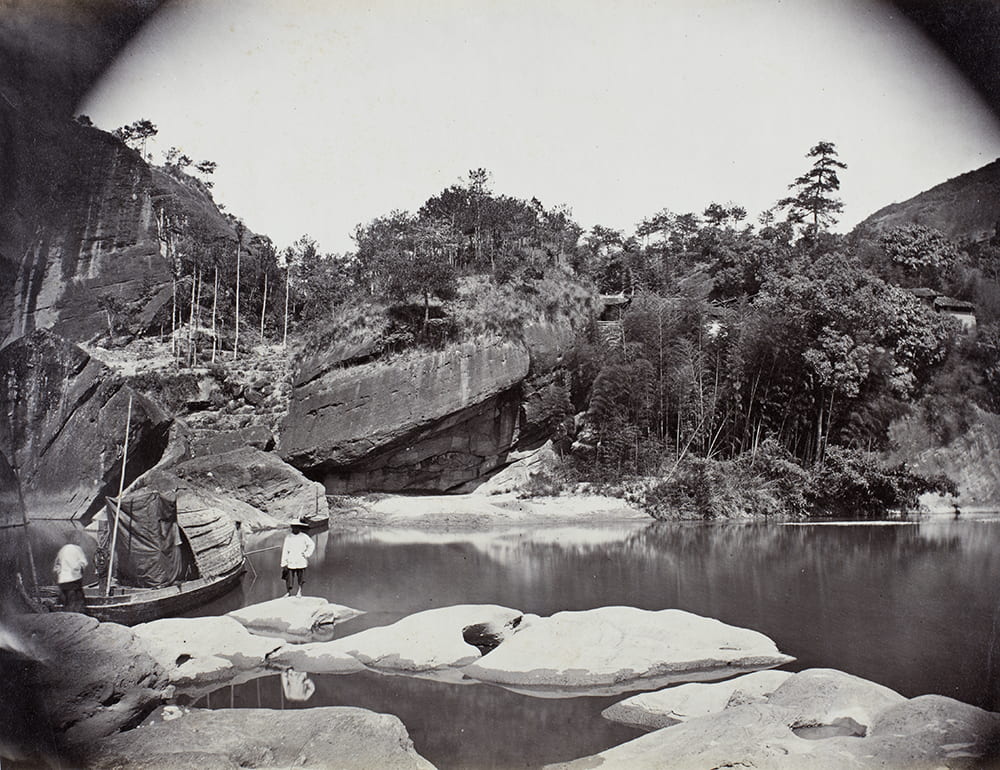
Gollen Valley cave near Xingcun, Fujian, c1869. Photograph by Lai Fong (Afong Studio). HPC ref: Fr01-071.
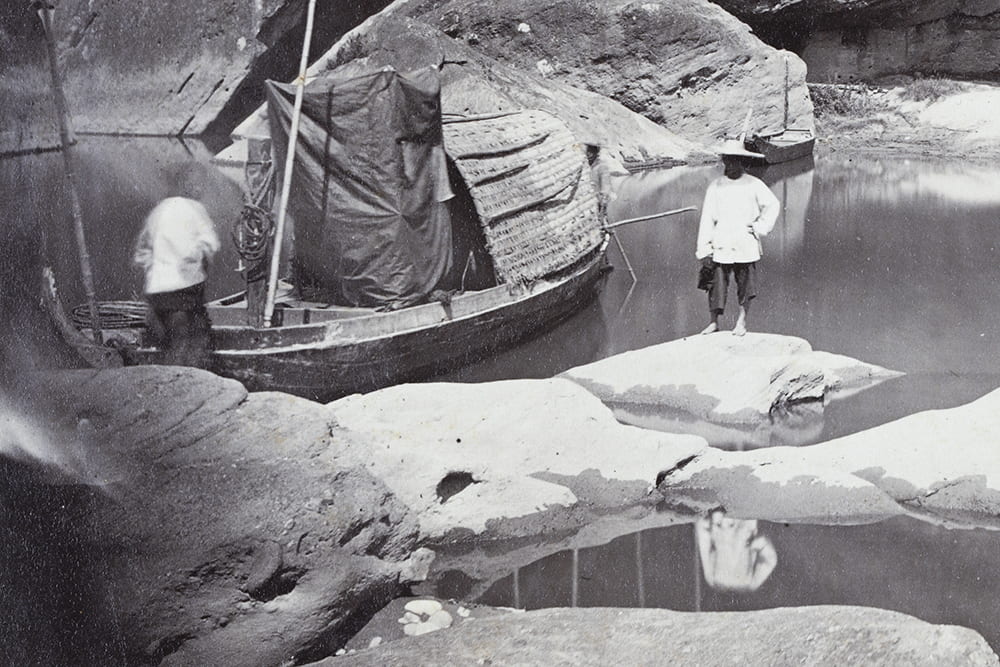
Lai Fong’s makeshift dark-tent (i.e. darkroom) on a boat, at Gollen Valley cave near Xingcun, Fujian, c.1869. On the one hand, Lai Fong had ready access to plentiful fresh water; on the other, perhaps greater care had to be taken when pouring chemicals etc. Photograph by Lai Fong (Afong Studio), being a detail from Fr01-071. HPC ref: Fr01-176.
The large chocolate-hued albumen prints that Lai Fong made are textbook examples of Frederick Scott Archer’s game-changing collodian technique, i.e. ‘highly satisfactory from the artistic point of view; the image produced was perfect in definition, subtle in detail, and well balanced in tone values.’ (4)
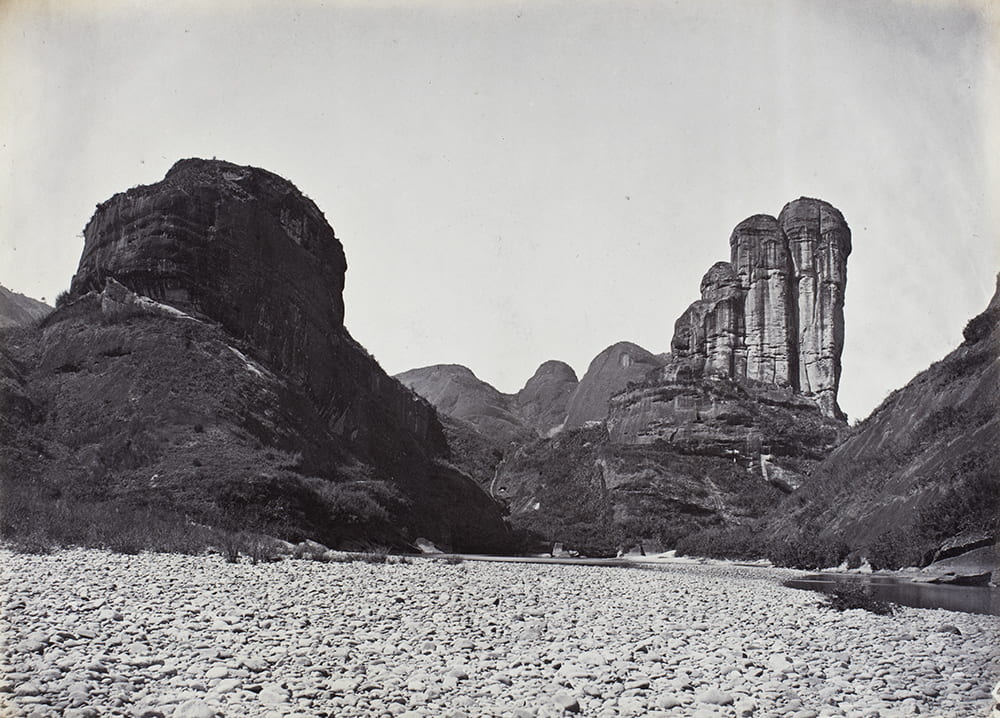
Jade Girl’s Mirror-stand Peak on the Nine-bend river, Wuyi Mountains, near Xingcun, Fujian, c1869. Captioned in another album: ‘94. Gemmy Damsel’s Mirror-stand Peak near Sing Chang Tea mart’. Photograph by Lai Fong (Afong Studio). HPC ref: Fr01-079.
Photographs by John Thomson in the album, include the following:
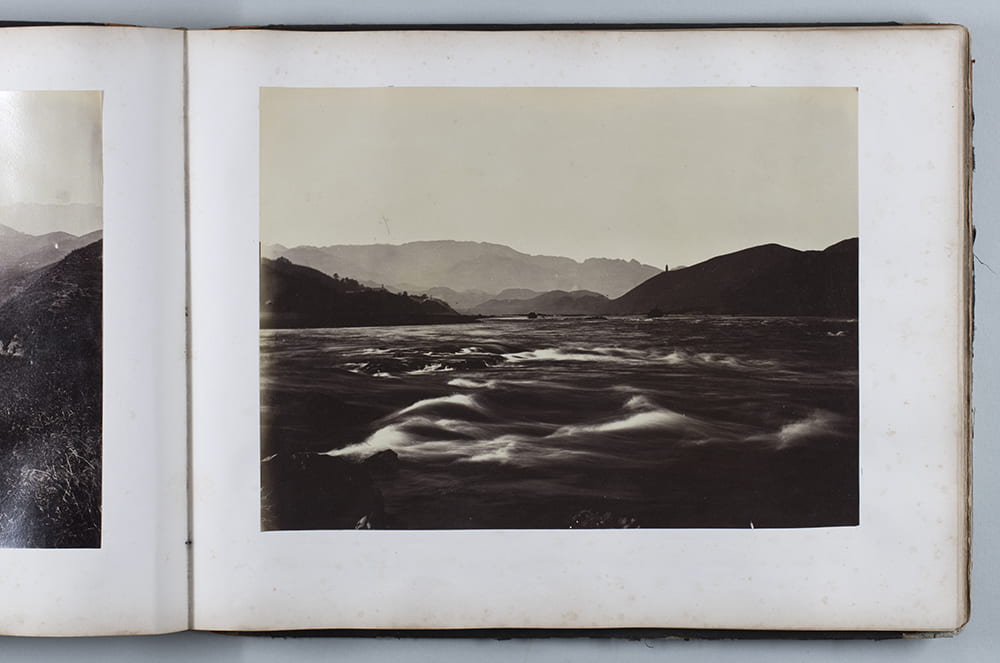
Rapids at Nanping, Fujian, c1870. ‘Freezing’ rapidly flowing water in a photograph was not possible with the slow shutter speeds available at the time. This could make for dreamy waterscapes. See Fr01-098. Photograph by John Thomson. HPC ref: Fr01-p078.
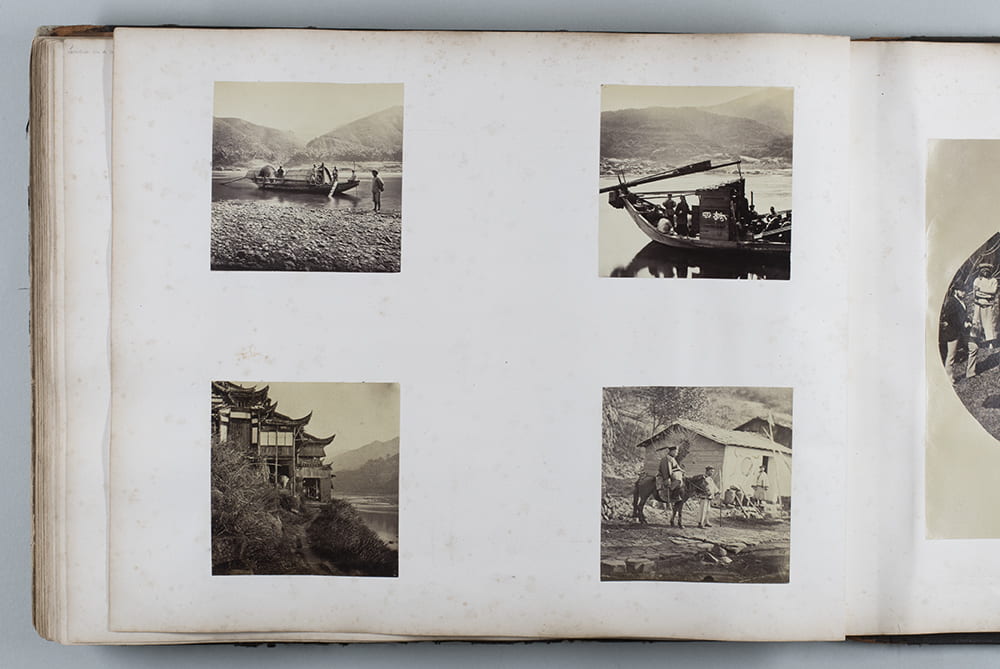
These square prints were made off one of a pair on stereoview negatives. Interestingly, Deborah Ireland points out that all four of these photographs were later reproduced in John Thomson’s books, Foochow and the River Min or China and Its People. See Fr01-109, Fr01-110, Fr01-111 and Fr01-112. HPC ref: Fr01-p083.
Thomson occasionally photographed at the same location as others. Compare Thomson’s well known photograph of picturesque ‘Little’ Jinshan temple (金山塔寺), Wulong River, near Fuzhou, with Fr01-002 (below) and with Hv36-47.
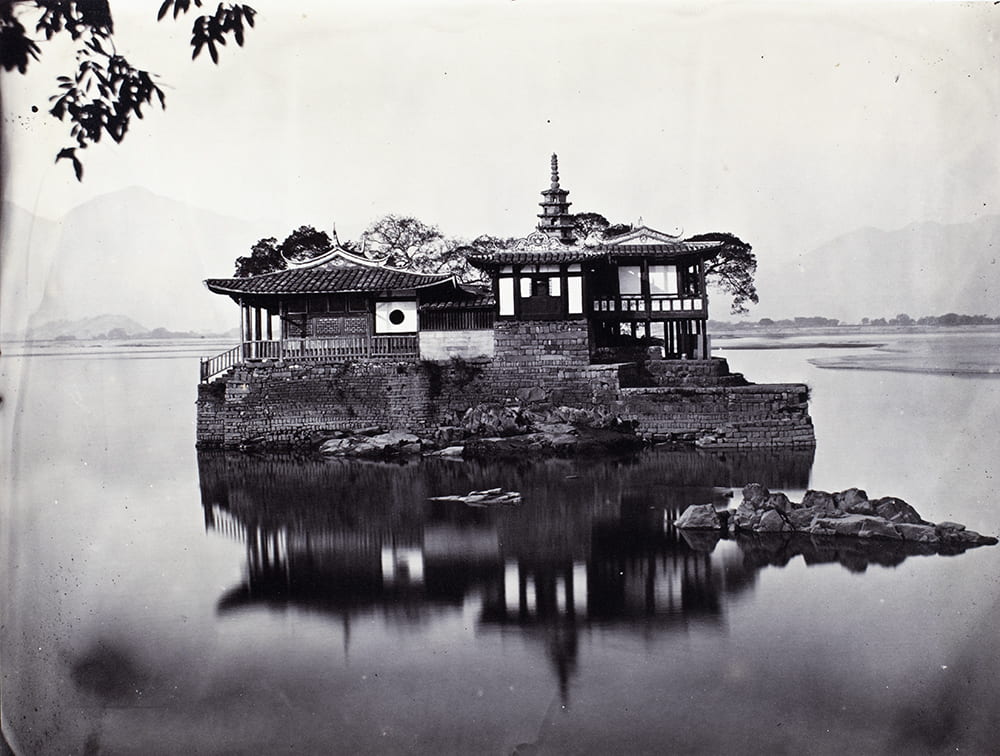
‘Little’ Jinshan temple (金山塔寺), Wulong River, Fuzhou, c1869. The ‘Little Jin Shan’ is a pagoda and temple on a small island located in the middle of the Wulong River, which is a branch of the Min River, near the village of Hongtong in the western suburb of the city of Fuzhou in Fujian Province. It resembles the famous Jin Shan (Gold Mountain or Golden Hill) Temple (金山寺) in in Jiangsu Province. Unidentified photographer – perhaps Lai Fong (Afong Studio)? HPC ref: Fr01-002.
Who, I wonder, is sitting with Charles Sinclair and his wife in Fr01-081, which is a detail of Lai Fong’s photograph Fr01-080 (Touring party in Bankers’ Glen, on the Yuen Foo branch of the Min River, near Fuzhou, c1869.)?
The album contains seven, multiple part, panoramic views. Towards the end are 28 photographs taken in Shanghai, Singapore and Penang, perhaps serving as souvenir remembrances of Fry’s sea journey home to Essex? An irresistible pièce de résistance treat in this box-of-chocolates album, is a striking interior photograph of Holy Trinity Cathedral in Shanghai, taken with great skill soon after the building was completed. The depth of focus is remarkable, the lighting expertly balanced, the composition radical.
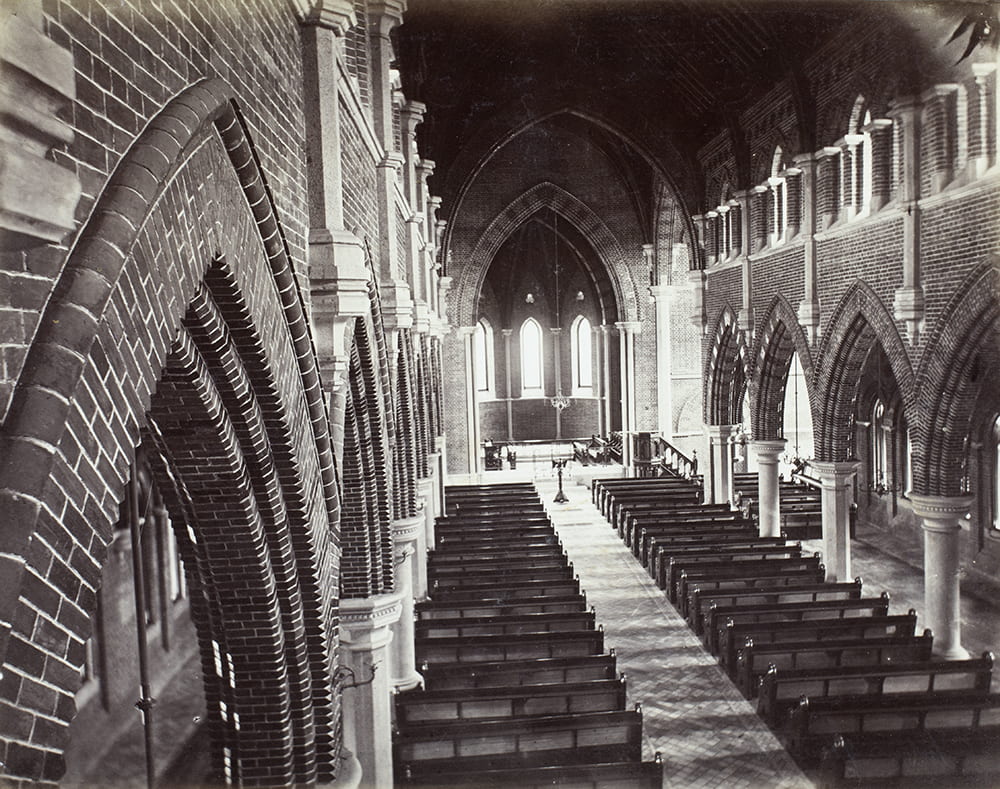
Interior of Holy Trinity Cathedral, Shanghai, c1870. The ‘British Church’ or Holy Trinity Church (later Holy Trinity Cathedral) was consecrated in 1869. Unidentified photographer. HPC ref: Fr01-128.
John Gurney Fry’s album was subsequently owned by both his sister Jane Augusta Fry and his brother Frederick William Fry. Later, it apparently came into the possession of R. Tanner-Smith of the tea importers and blenders Twinings, before being passed on to Richard Ambrose’s family. The album was saved from disposal after Richard Ambrose’s great grandmother’s death in 1946, by his father, who appreciated the beauty and technical skill evident in the photographs.
It is fitting that the John Gurney Fry Collection is in Bristol, a city with strong Fry family connections. Frys invented the chocolate bar in Bristol. Lewis Fry and his sister Mary Fry (Mrs Napier Abbott) helped mobilise support in the city for the creation of University College Bristol and later the University of Bristol. The Fry Tower still exists in University Road. The Norah Fry Centre for Disability Studies thrives. The Fry Portrait Collection is a much used resource in Special Collections. Property, money, books and other mss were donated to the university by the family. The generosity of the Fry family, and of Richard Ambrose, is a credit to the city.
(1) The London & China Telegraph, 29 October 1877, p. 925.
(2) Terry Bennett, History of Photography in China, Chinese Photographers 1844-1879 (London: Quaritch, 2013), p. 191.
(3) Lucia Moholy, A Hundred Years of Photography 1839-1939, (Harmondsworth: Pelican Books, 1939), p. 72.
(4) Moholy, A Hundred Years of Photography, p. 72.
